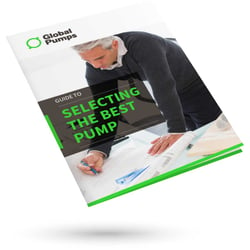![]()
The advantages and disadvantages of diaphragm pumps and peristaltic hose pumps.
Diaphragm pumps move liquids through suction created by a vibrating diaphragm, while peristaltic hose pumps move liquids along by squeezing liquid-filled hose with a one-way “milking” action. Both types of pumps have distinct advantages and disadvantages. Diaphragm pumps are generally more complex, and have more valves, so they often require more technical knowledge initially. Peristaltic pumps are simpler, and work more easily under difficult conditions, yet over time the hose requires more attention.
Advantages and Disadvantages of Diaphragm Pumps
Diaphragm pumps offer many advantages. With proper maintenance, they are cheaper to operate in the long term and they are more energy-efficient because they apply more force during the forward stroke of the pump. They are well-suited for pumping chemicals or other potentially-damaging liquids, since a well-maintained diaphragm pump is less likely to leak. Finally, correctly-sized diaphragm pumps are better-suited to overcome standing pressure in the flow line.
On the downside, diaphragm pumps work best when the liquid is clean and free of particles or gases. These pumps have check valves, usually balls located on both the intake and discharge sides; if these valves become clogged the pump will become inaccurate in its metering capability and will then lose suction/prime. Likewise, diaphragm pumps work best without back-pressure; in order to prime a diaphragm pump, it should be set to maximum stroke to overcome any back-pressure. To resolve these issues, diaphragm pumps usually have bleed valves to remove trapped air and sludge, and a feed-rate mechanism to adjust inflow. Don’t get confused with air operated diaphragm pumps which don’t have bleed valves.
Advantages and Disadvantages of Peristaltic Hose Pumps
Peristaltic pumps are simple and easy to use and, they can handle thick or dirty liquids well, since there are no check valves to become clogged. Also, they operate more easily against higher back-pressures and thicker solutions. Finally, they prime easily and provide good suction capabilities for most liquids.
Still, peristaltic pumps have drawbacks, mainly involving their hose. By incessant squeezing, the hose is steadily weakened until it deteriorates or also known as fatigue. Not only are the feed rate and pumping capability diminished over time, the pump motor itself is constantly under a load. Of course, this workload consumes more energy. Yet, the most serious downside of peristaltic pumps involves the possibility that the hose may rupture. If undetected, caustic or dangerous liquids may leak and damage equipment or the pump casing. Although manufacturers rate these hoses and other liquid-contact surfaces for a specific number of hours, users tend to overestimate the useful life of the hoses, which increases the risk of inefficiency and leaks.
Summary
Diaphragm pumps generally work best for clean liquids and harsh chemicals in low-pressure applications, whereas peristaltic hose pumps perform better with thick or dirty fluids containing particulate material, bubbles or trapped gases, especially in high-pressure applications, yet the hose must be monitored to prevent leaks.
Global Pumps stocks both the peristaltic hose pumps and the air operated diaphragm pumps. Get in touch with us today. We have over 40-years’ experience working with a wide range of industries and can recommend the best practice for you when it comes to installing, maintaining, or refurbishing your pumps.

